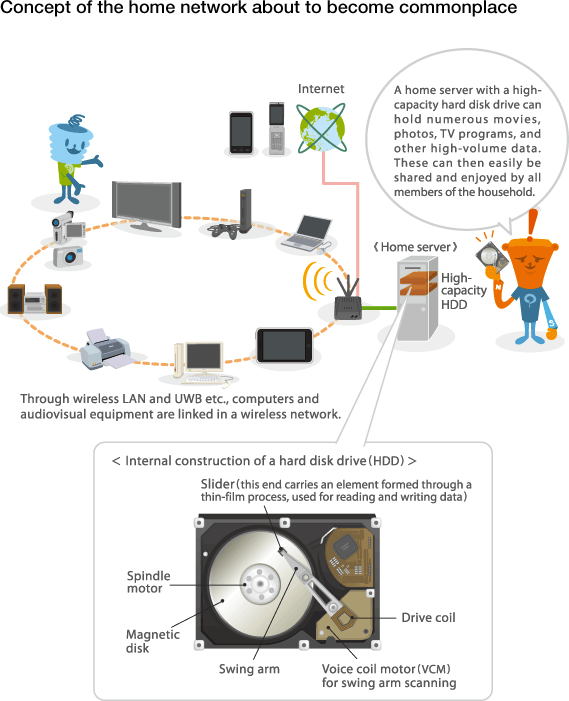The Wonders of Electromagnetism
When Were Coils and Magnets Born?

TVs, radios, computers, and smartphones, as well as refrigerators and microwave ovens, medical and industrial equipment, trains, cars, satellites, and even rockets. Through all these things, electricity and magnetism play an integral role in our everyday lives.
However, as technologies become more advanced, the inner workings of devices and their underlying principles become increasingly opaque and harder to comprehend. These “black boxes” are tightly packed with discoveries and inventions—and leaving them unopened would be a sorely missed opportunity.
This series of articles, named The Wonders of Electromagnetism, will pry open these black boxes and shed light on the wisdoms hidden inside. We hope it will help reinvigorate people’s curiosity in science and technology.
Wireless communication using electromagnetic induction enables mobile payments
Before we begin, meet the mascots that will be appearing throughout the series. First, we have the inquisitive Jishakun, who wears a question mark on its hefty-looking head, always pondering, “What? Why? How?” Then we have the constantly curious Coilun, who is always on the lookout for information using a coil worn on its head like an antenna. The mascots are named after magnets and coils. Whenever the two are together, something intriguing seems to happen. With these companions at our side, let’s uncover the many mysteries of electricity and magnetism that surround us.
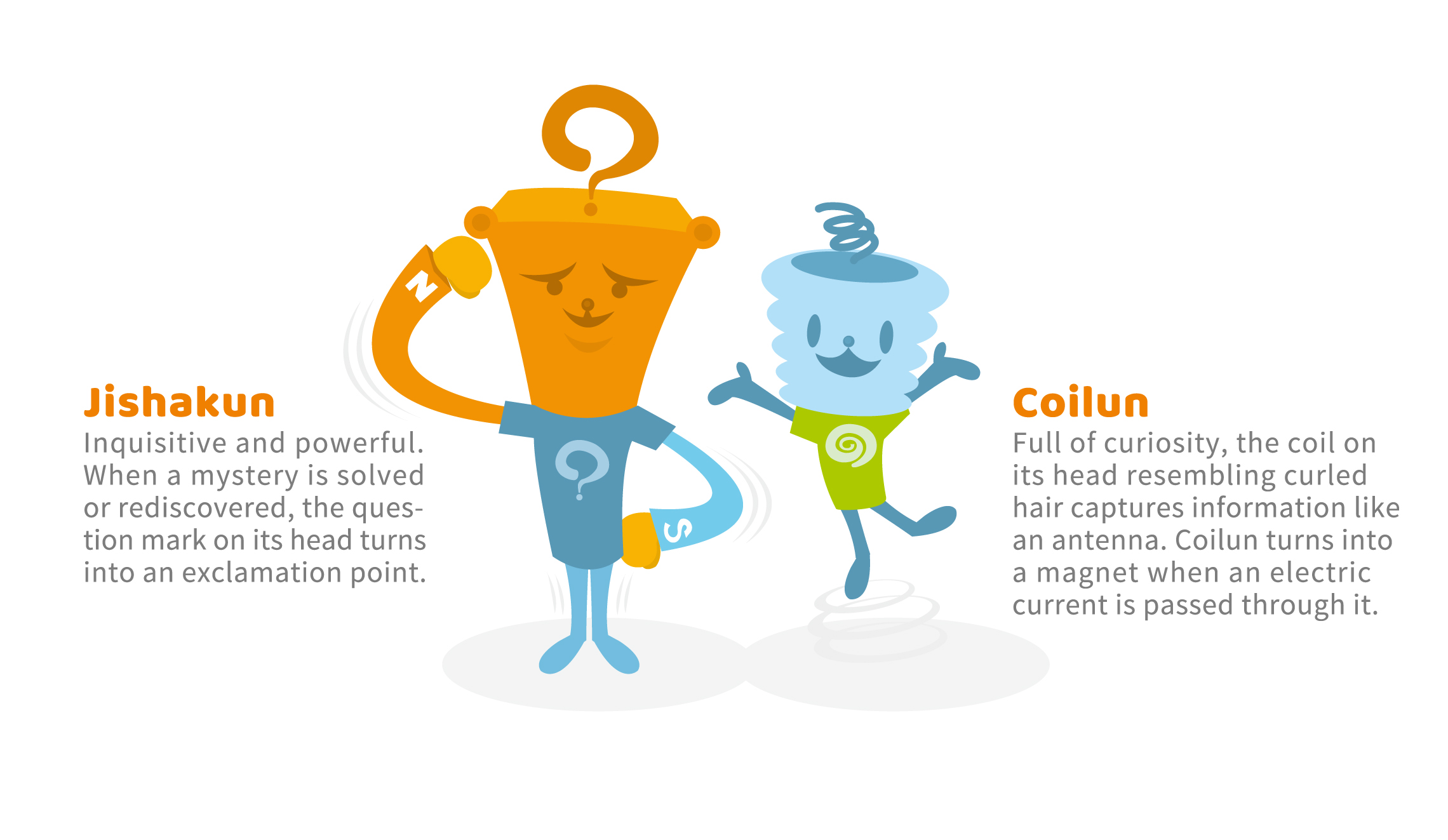
When you wave a magnet quickly back and forth near a coil, an electric current flows through the coil. This is the phenomenon of electromagnetic induction in action, familiar from science experiments. Electromagnetic induction is the most fundamental phenomenon involving magnets and coils. Electric motors and generators are applications of this phenomenon.
Most modern smartphones come equipped with wallet features like Apple Pay and Google Pay, allowing payments to be made by simply hovering it over a reader. Users can manage multiple payment methods with just one smartphone by registering credit cards, digital currencies, and public transit passes in the virtual wallet. The convenience of handling both shopping and train station gates on a single device is remarkable. Many people have streamlined their bulky wallets by consolidating the excess of plastic cards and passes into their smartphones.
Transactions using plastic cards containing digital currencies and train passes utilize a wireless technology known as contactless smart card systems, which operate based on electromagnetic induction. Both the card and the reader/writer contain coils, enabling wireless communication through the exchange of magnetic fields between them. Information on the card can be read and written without a battery in the card, as the magnetic field sent by the reader/writer powers the chip embedded in the card. Coils can generate magnetic fields and can also capture and store magnetic energy.

Contactless communication technologies include the NFC (Near Field Communication) and FeliCa smart card systems. Developed by Sony in Japan, FeliCa is characterized by its fast read/write speeds. It has gained popularity in Japan as the communication standard for public transit passes and digital currencies used in retail locations. NFC, on the other hand, is an international standard adopted in applications like contactless credit card payments and e-passports.
Smartphones with wallet functions typically support both NFC and FeliCa, allowing users to consolidate multiple cards, including digital currencies and credit cards, into a single device.
Passing an electric current turned a coil into a magnet
A kick-off of this series of articles would be incomplete without exploring the origins of magnets and coils. Michael Faraday’s discovery of electromagnetic induction dates back to 1831. However, a groundbreaking moment in electromagnetics occurred more than a decade earlier during a famous experiment by Hans Christian Ørsted in July 1820. Ørsted was passing an electric current through a platinum wire using a voltaic cell when he (or initially his student or assistant, according to some accounts) noticed a slight deflection of the needle of a magnetic compass coincidentally situated near the wire.
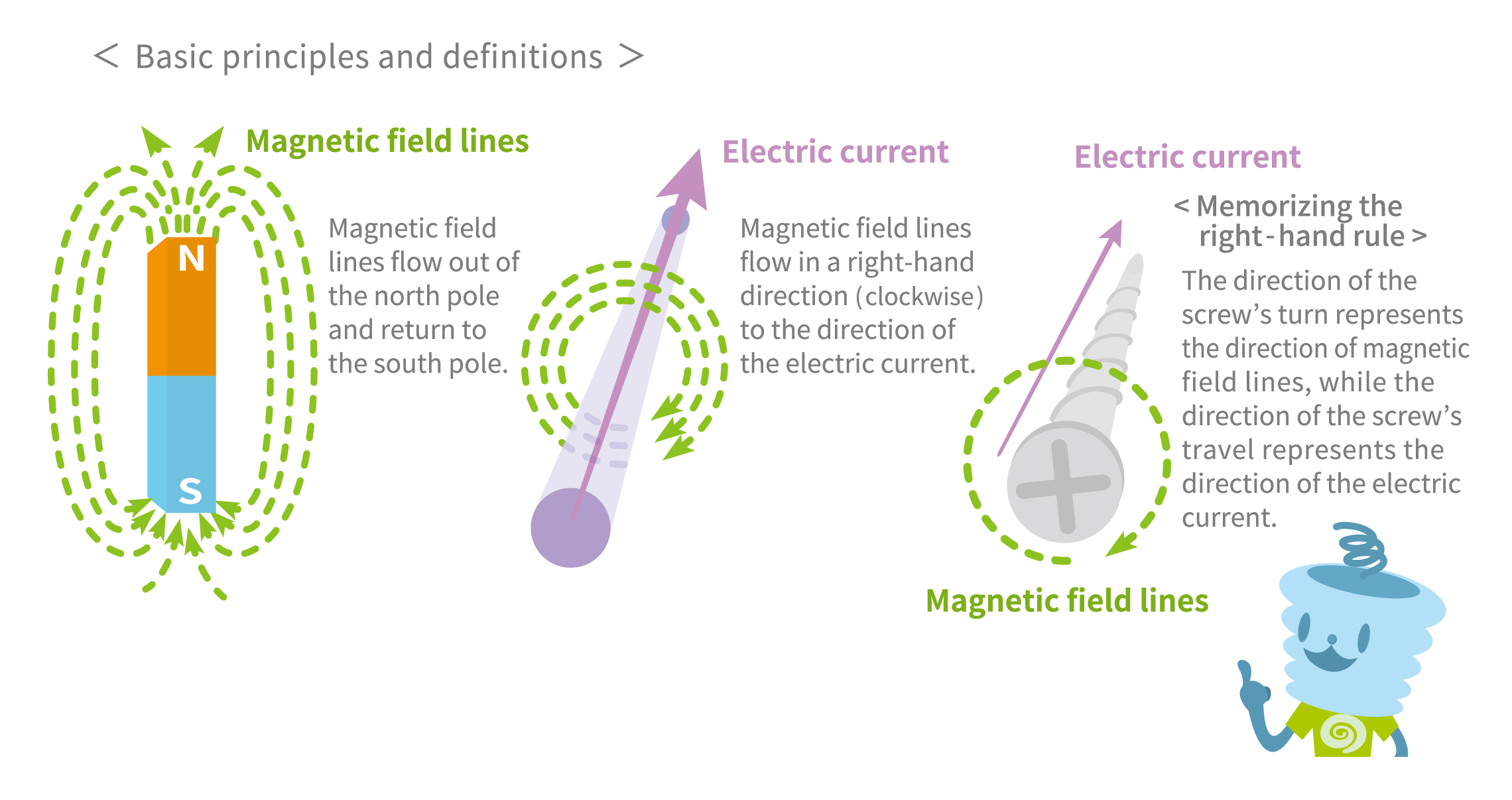

Ørsted’s discovery of the magnetic effect of electric current sent shockwaves through the scientific community, leading to the widespread replication of his experiment. It is believed that many scientists subsequently conducted experiments involving winding wires into coils and passing electric currents through them, laying the groundwork for the coil we know today. Johann Christian Poggendorff stands out, as he confirmed that more windings in a coil resulted in greater deflections of a compass needle placed inside the coil.
Shortly after, Joseph Louis Gay-Lussac, known for his work on gases, discovered that an electric current flowing through a conductor could transform a steel needle into a magnet without direct contact. Placing steel inside a coiled wire and passing an electric current through it would turn the steel into a permanent magnet. This magnetization method, still in use today, was devised by François Arago, known for Arago’s disk.
Following the introduction of coils, artificially produced magnets also made their debut in the nineteenth-century European scientific community. Of course, natural magnets had been discovered during the BC eras, and the method of rubbing natural magnets against iron to create artificial magnets had been known for ages. But no one had even thought of passing electricity through coils, nor was it experimentally feasible until the nineteenth century (the voltaic pile battery was invented in 1800). The term “coil” is also not new. A piece of thread or string wound around had long been called a coil.
Many forms of coils exist in nature, including vortices, hurricanes, spiral seashells, and plant vines. Even animal fur and human hair exhibit some degree of curliness. Incidentally, the popular Winter Olympic sport of curling involves sliding a stone on ice, giving it a clockwise or counterclockwise spin, and gently “curling” it to the desired position. The sport derives its name from this action.
Because a perfectly straight line or a perfect circle is virtually nonexistent in nature, the coil is a shape that holds physical significance. Much like coils in nature, the electronic coil was destined to be born.
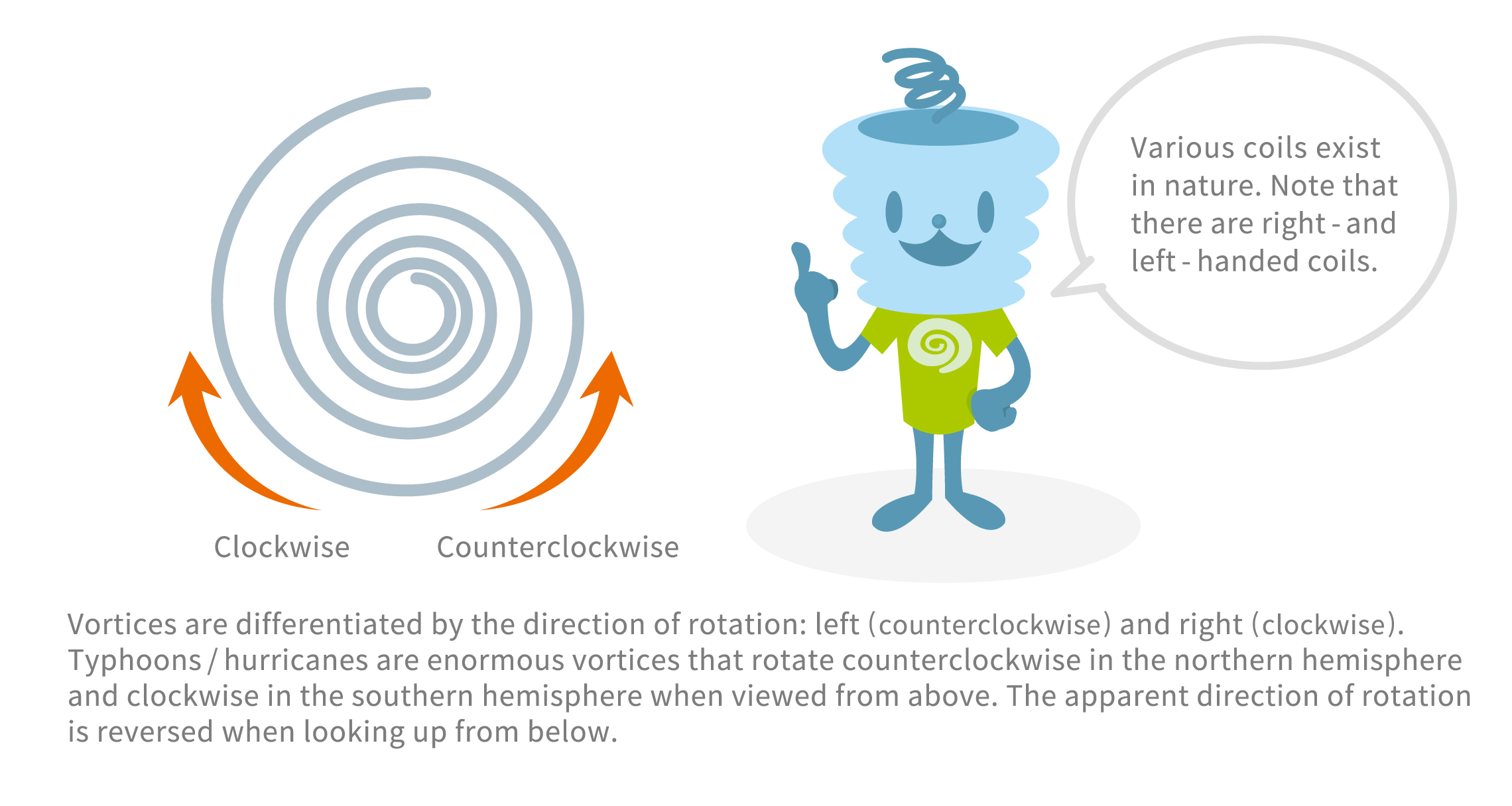
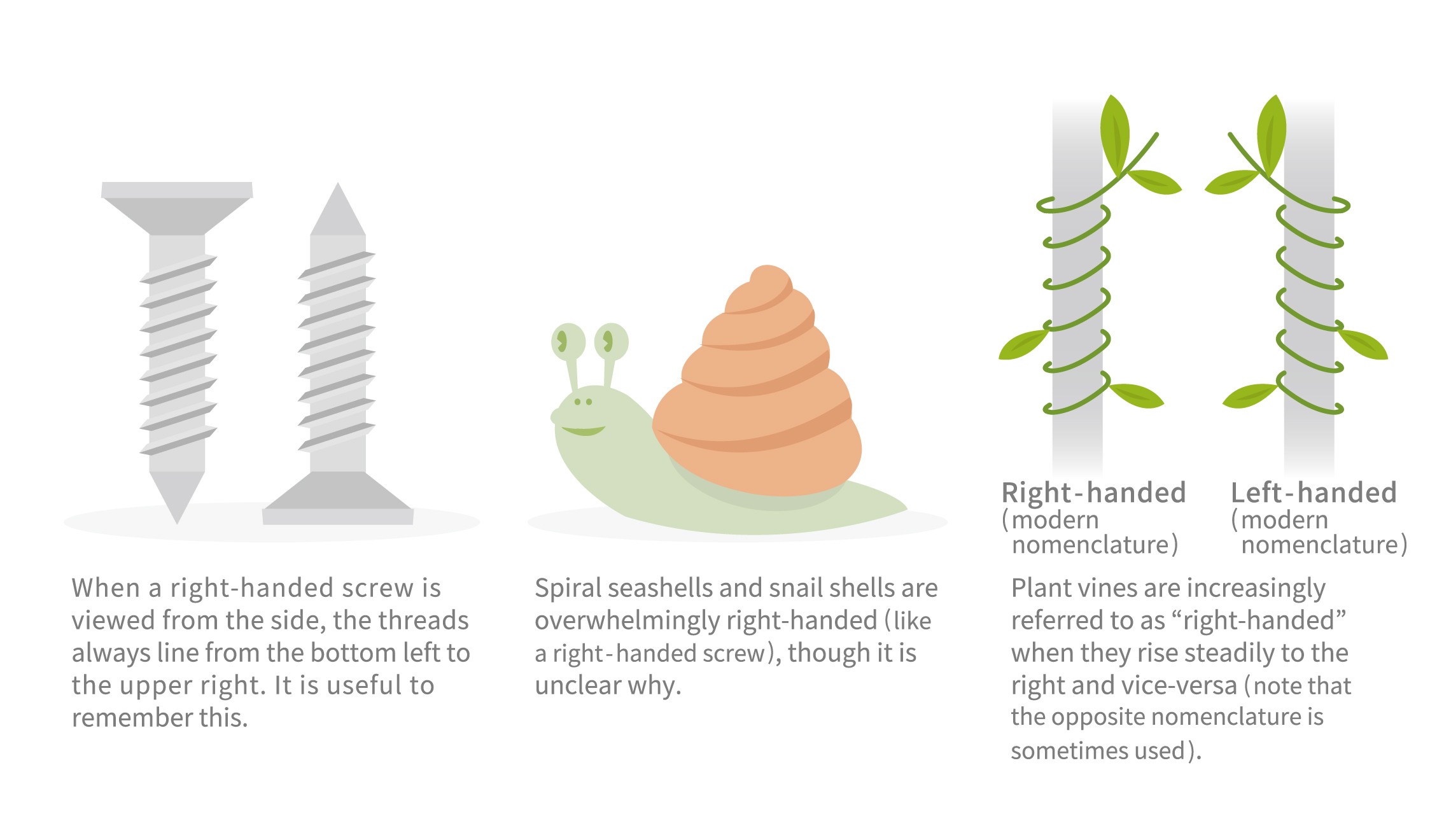
The “right-hand rule” reveals the polarity of an electromagnet
The scientific understanding of magnets progressed rapidly after Ørsted discovered the magnetic effect of electric current. For example, when a current is passed through a conductor inserted vertically into a piece of cardboard, and ironsand is sprinkled around it, the ironsand forms a neat set of concentric circles. This phenomenon is similar to the pattern observed when ironsand is scattered around a magnet, revealing the magnetic field lines’ pattern. Similar experiments, later conducted by numerous researchers, confirmed that an electric current not only creates a magnetic field but is indeed identical to the magnetic field produced by a magnet.
This suggests that a conductor with an electric current can be considered a magnet. Two conductors carrying currents should exert attractive and repulsive forces between them, much like the forces observed between magnets. To test this theory, André-Marie Ampère constructed a movable coil (a conductor shaped into a rectangle) and conducted rigorous experiments. The results revealed an attractive force between two conductors when electric currents flowed in the same direction and a repulsive force when currents flowed in opposite directions.
Ampère, well-versed in mathematics, expressed the magnetic field created by an electric current as a mathematical formula, giving rise to the new discipline of electrodynamics. According to Ampère’s right-hand grip rule, the direction of electric current and the direction of magnetic field lines are analogous to driving in a right-handed screw: magnetic field lines flow in the same direction as the screw’s turn, while current flows in the same direction as the screw’s travel. The rule is a simplified representation of Ampère’s law, which is defined in a mathematical formula.
While a coil with an electric current behaves like a bar magnet, its north/south polarity is determined by the direction of the current and the direction in which the coil is wound. This is a common test question that might have stumped you at some point. There are various ways to remember it, but the method described under Memory Aid 3 in the illustration below is the most versatile while remaining true to the basic principles. The polarity can be derived by memorizing just two rules: “A magnet’s magnetic field lines flow out of the north pole and return to the south pole” and “Magnetic field lines flow in a right-hand (i.e., clockwise) direction to the direction of the electric current flowing through a conductor (the right-hand grip rule).”
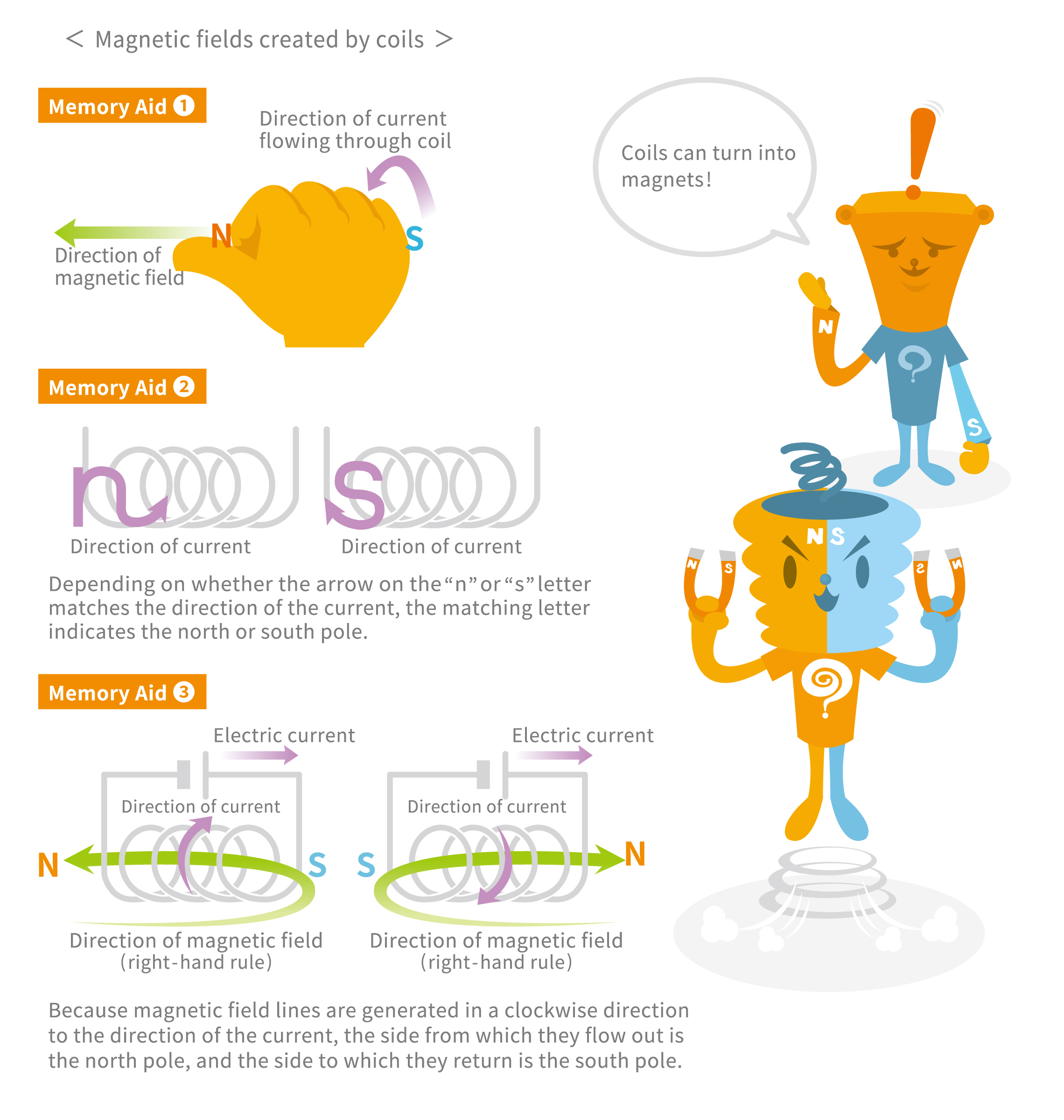
TDK is a comprehensive electronic components manufacturer leading the world in magnetic technology



